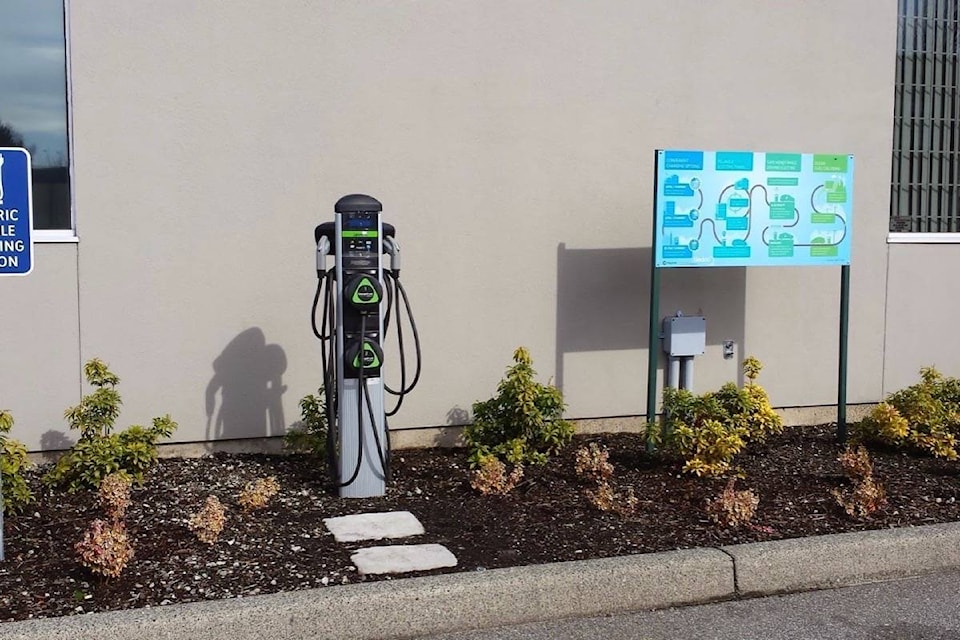Two island municipalities are set to join a Hwy 16 electric vehicle charging network. Masset has committed to installing one station, while the number in Queen Charlotte will depend on the funding scenario organizers are able to achieve.
The Charge North Electronic Vehicle (EV) network plan includes six regional districts and 37 municipalities across northern and central BC. The coalition and Community Energy Association (CEA), an independent climate and energy advisor to local governments, have been working on planning and establishing an electronic highway network since May 2018.
Their goal is to install 120 Level 2 charging stations covering more than 2,780 kilometres of highway from the south of Kamloops out to Haida Gwaii.
READ MORE: Mapping an electric vehicles charging network across northern B.C.
Money to cover 73 per cent of the total $5.3 million cost will come from the provincial CleanBC Community Fund.
The network is looking to secure match funding for the remaining 27 per cent. Their success will determine whether local governments pay just $2,500 per station, or $5,000.
“In the scenario where it’s $5,000, council has said they would like one [station],” said Village of Queen Charlotte CAO Lori Wiedeman. “In the other scenario we’ll take two.”
Masset council voted for one station regardless of the cost achieved.
“We’ve committed to one,” said Masset CAO Trevor Jarvis. “Council looked at it and said they don’t see there’s a lot of demand for it right now but we want to be a part of it…this program is supposed to run for five years to make sure the network is covered and promoted. So in five years things may have changed dramatically and we may want another one.”
Port Clements has opted out of the program for other funding priorities.
READ MORE: BC Hydro’s electric vehicles charging network eyes the North Coast
The CEA would be responsible for maintaining and operating the stations for five years, during which time municipalities will also be reimbursed for electricity costs, currently about 48 cents per hour.
Level 2 charging stations can charge an EV within 2 to 6 hours, much faster than a Level 1 (120-volt) charging station, which can take 8 to 12 hours. A Level 2 becomes necessary for owners who drive long distances or don’t have the time to recharge their car during the day.
There are currently 9,000 electric vehicles in B.C., but more are anticipated to hit the road — as many as 300,000 are expected in the province by 2030. The province has set a goal of seeing every vehicle sold in B.C. by 2040 be zero emission.
These stations are compatible with most Battery Electric Vehicles (BEV) and Plugin Hybrid Electric Vehicles (PHEV), but Tesla vehicles would need an adapter. According to the project’s timeline, the installation of the EV stations should take place sometime in 2020
- with files from Brittany Gervais
observer@haidagwaiiobserver.com
Like us on Facebook
